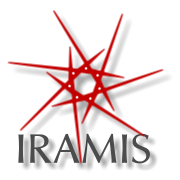Evidence for fractional matter coupled to an emergent gauge field in a quantum spin ice
Résumé
Electronic spins can form long-range entangled phases of condensed matter named quantum spin liquids. Their existence is conceptualized in models of two- or three-dimensional frustrated magnets that evade symmetry-breaking order down to zero temperature. Quantum spin ice (QSI) is a theoretically well-established example described by an emergent quantum electrodynamics, with excitations behaving like photon and matter quasiparticles. The latter are fractionally charged and equivalent to the `spinons' emerging from coherent phases of singlets in one dimension, where clear experimental proofs of fractionalization exist. However, in frustrated magnets it remains difficult to establish consensual evidence for quantum spin liquid ground states and their fractional excitations. Here, we use backscattering neutron spectroscopy to achieve extremely high resolution of the time-dependent magnetic response of the candidate QSI material Ce$_2$Sn$_2$O$_7$. We find a gapped spectrum featuring a threshold and peaks that match theories for pair production and propagation of fractional matter excitations (spinons) strongly coupled to a background gauge field. The observed peaks provide evidence for a QSI through spectroscopic signatures of space-time symmetry fractionalization, while the threshold behavior corroborates the regime of strong light-matter interaction predicted for the emergent universe in a QSI.
Domaines
Matière Condensée [cond-mat]| Origine | Fichiers produits par l'(les) auteur(s) |
|---|




